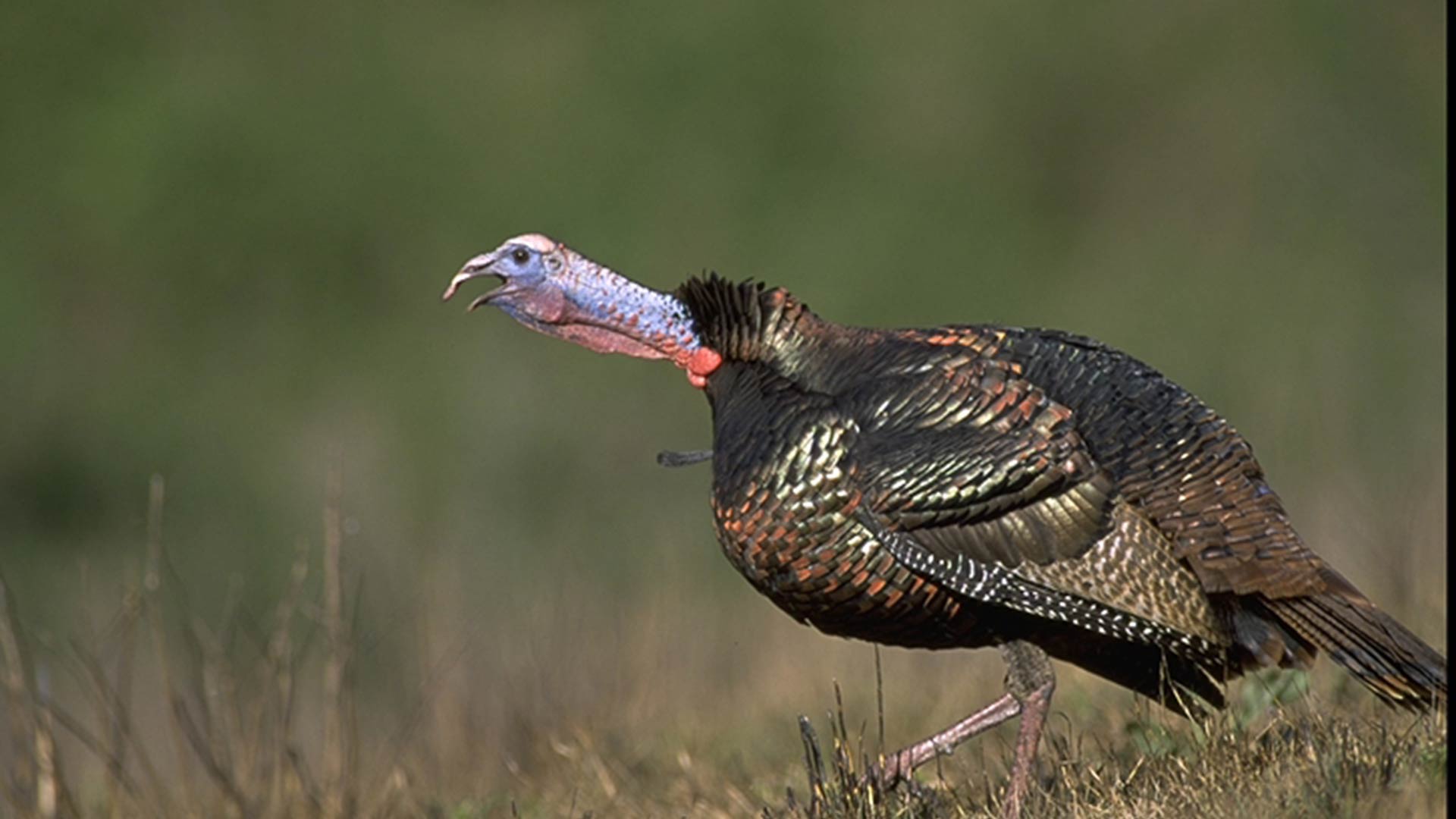All five subspecies of American turkeys have the same vocabulary. It consists of 28 different turkey calls, each with a message. Here are the primary vocalizations that hens and gobblers utter throughout the year. It is important for turkey hunters to understand these vocalizations to better understand the mood of the turkeys they are hunting, and also to know when to use each one.
Gobble
The gobble is the sound most people associate with turkeys. Toms gobble in the Spring primarily to attract hens, but also to exude their dominance over subdominant males. A typical gobble is loud and aggressive, though it lasts only one or two seconds. Toms sometimes gobble to keep tabs on one another on warm autumn days. Mature toms are well versed in gobbling, but jakes learning the mating call often toss out a weird-sounding mix of gobbles and squawky yelps.

Yelp
Turkeys yelp in rhythmic, 4- to 10-note series to locate other turkeys (shorter or longer yelping sequences are not uncommon). Two-note yelps—“kee-awk, kee-awk”—run the gamut from raspy to high-pitched. Gobbler yelps are slower in cadence and often deeper-throated than hen yelps.
Tree Yelp
A soft, short version of the basic yelp, turkeys tree call as they stir on their limbs each morning, saying to other birds in the area, “I’m up, and all’s well over here.”
Cluck
Gobblers and hens utter one-syllable, soft to staccato notes to locate and communicate with other turkeys. Birds tree cluck softly at first light.
Cutt
Lonely, lost or excited hens use fast, irregular clucks when searching for other turkeys, especially in the spring. A series of cutts lasts 5 to 15 seconds and is usually loud and aggressive.
Cackle
Hens cackle in 10- to 20-note series when flying up to and down from roost trees, and also when sailing across creeks, rivers, canyons and the like. Cackles, which are made up fast, irregular clucks and yelps, are followed up with basic clucks as turkeys hit the ground and gather themselves after flight.
Purr
Hens and gobblers utter this soft, fluttering call when feeding along. When relaxed and close together, turkeys purr to signal contentment.
Spit and drum
One thought to be humming of a gobbler’s shimmying tail feathers, biologists now agree that the spit and drum is a melodious, two-note vocalization forced deep from a gobbler’s chest. A tom drums in the spring to attract hens. Depending on terrain, wind and foliage, you can hear drumming 60 to 100 yards away.
Kee-kee
This is the soft, musical, 3-note lost call or “whistle” of poults in autumn and winter. Some young turkeys kee-kee into the spring as well. The kee-kee run, an offshoot of the kee-kee, combines whistles and lost yelps. Jakes often kee-kee run in the fall.